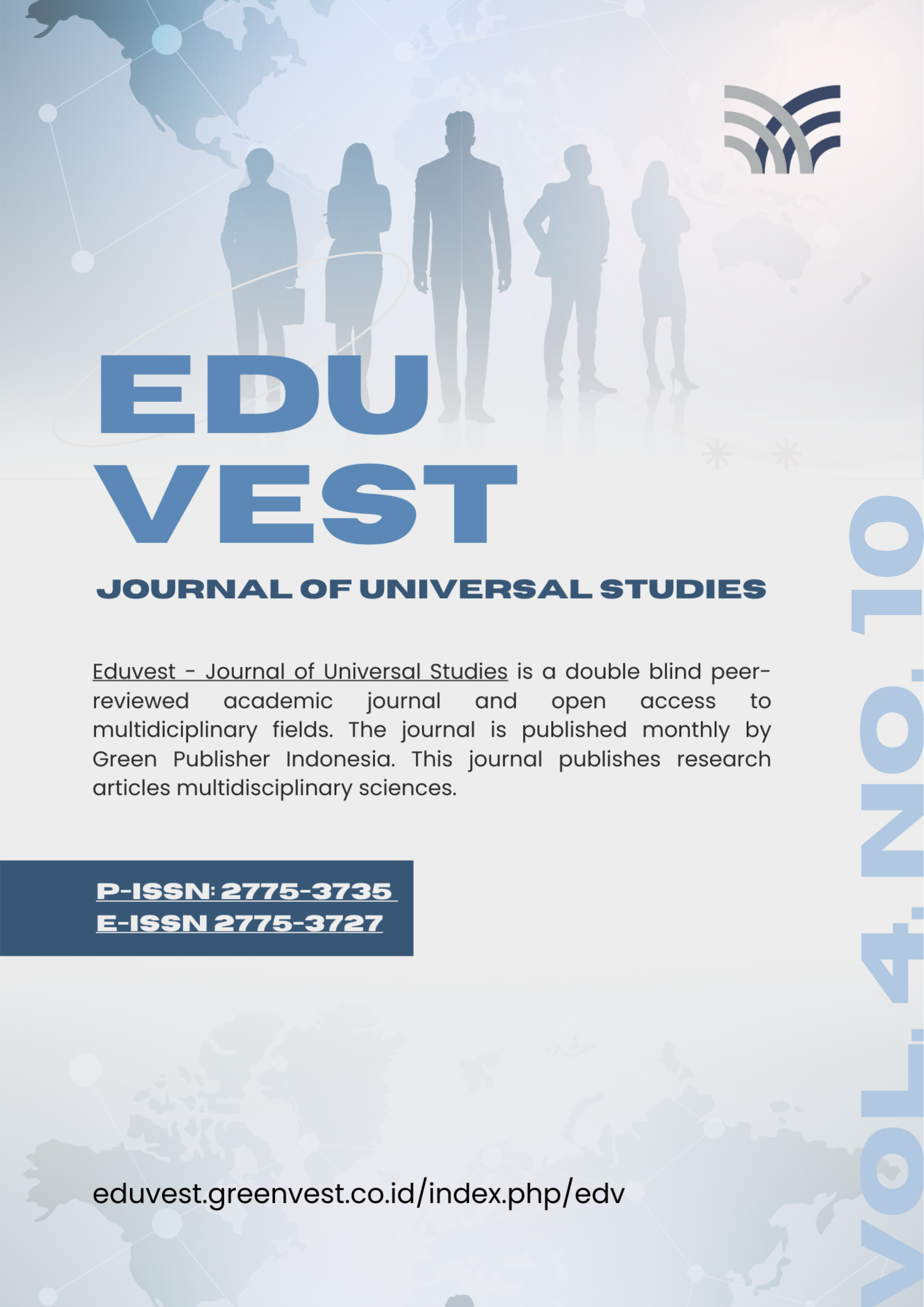Analysis of Successfully Brand positioning & extending on customer engagement: A Study case of UNIQLO Retail Store
DOI:
https://doi.org/10.59188/eduvest.v4i10.1296Keywords:
Customer Engagement, Fashion Industry, Online brand community, Customer Loyalty, Brand positioningAbstract
The study draws on relevant literature, observations, and interviews, revealing that efforts focused on positioning and customer engagement are often misunderstood as branding. UNIQLO, one of the world’s largest fashion apparel companies, integrates the entire process of clothing production, from planning and design to manufacturing, distribution, and retail. UNIQLO expanded its operations in Indonesia on February 13, 2013, and currently operates 65 stores across 25 cities in the country. This paper aims to explore how UNIQLO, a global fast-fashion retailer from Japan, drives its organizational success. UNIQLO is known for its high product quality, particularly through the introduction of its Heat Tech cold-weather underwear line, which is both affordable and suitable for warm climates. The company also continues to innovate through research and development to meet customer needs. UNIQLO's stores have a distinctive presence and strong market positioning. In 2014, the brand launched its mobile online store via a smartphone app, emphasizing customer satisfaction. This paper examines the key factors behind UNIQLO's organizational success.
References
Aaker, D. A. (2011). Building strong brands. Simon and schuster.
Creswell, J. W. (2015). Educational research: Planning, conducting, and evaluating quantitative and qualitative research. pearson.
Fournier, S., & Alvarez, C. (2012). Brands as relationship partners: Warmth, competence, and in-between. Journal of Consumer Psychology, 22(2), 177–185.
González-Benito, Ó., & Martos-Partal, M. (2012). Role of retailer positioning and product category on the relationship between store brand consumption and store loyalty. Journal of Retailing, 88(2), 236–249.
Gray, M., Joy, E., Plath, D., & Webb, S. A. (2013). Implementing evidence-based practice: A review of the empirical research literature. Research on Social Work Practice, 23(2), 157–166.
Keller, K. L. (2013). Building, Measuring, and Managing Brand Equity .
Kotler, P., & Armstrong, G. (2010). Principles of marketing. Pearson education.
Kotler, P., Keller, K. L., Ancarani, F., & Costabile, M. (2014). Marketing management 14/e. Pearson.
Lamare, A. (2018). A brief history of Uniqlo, the clothing company that’s changing everything. The Times Centre, New York City.
Lane Keller, K. (2013). Strategic Brand Managment: Building, Measuring, and Managing Brand Equity. Uk: Pearson Education Limited.
Lipson, H. A., & Darling, J. R. (1971). Introduction to marketing: an administrative approach. (No Title).
Marais, H.-T., Klerk, N. De, & Dye, A. L. B. (2014). Perceived effectiveness of sales promotion techniques amongst South African Generation Y students. Mediterranean Journal of Social Sciences, 5(21), 51–59.
Maslow, A. H. (1943). A theory of human motivation. Psychological Review Google Schola, 2, 21–28.
Qu, H., Kim, L. H., & Im, H. H. (2011). A model of destination branding: Integrating the concepts of the branding and destination image. Tourism Management, 32(3), 465–476.
Wang, Y.-L., & Tzeng, G.-H. (2012). Brand marketing for creating brand value based on a Mcdm model combining Dematel with ANP and Vikor methods. Expert Systems with Applications, 39(5), 5600–5615.
Published
How to Cite
Issue
Section
License
Copyright (c) 2024 Naufal Oktavianissa

This work is licensed under a Creative Commons Attribution-ShareAlike 4.0 International License.











